Double Masters 2022 Draft

Last week I took a family vacation to do a little cabin camping. I had a chance to get away and relax a little. In the meanwhile, I put some time into Double Masters 2022 drafts.
Following up on my last article, I’d like to discuss my approach to the format now that I have quite a few reps under my belt.
Initially, I started with an anything-goes strategy. I was mostly picking up rares, taking as many as I could get my hands on, filling in with fixing, and picking up extremely late cheap removal. The fixing is so plentiful that this approach is quite reasonable.
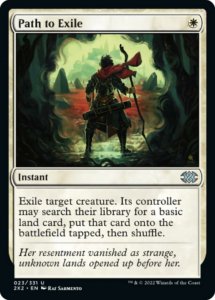

Generally, I’d stick to three colors initially and ideally stay there. I’m open to adding colors if the card quality and fixing is there, and I’ll splash off color-efficient removal like Path to Exile, Terminate, or Go for the Throat if I have other reasons to splash.
Example 3c Midrange

These midrange-good-stuff decks are potentially the best decks in the format, if your mana can support them. Quite often you’ll lose to the aggressive decks if you’re not able to pick them apart in the early turns keeping every creature in check. God’s Willing is quite possibly the scariest card out of these decks, whether it be RW Heroic/Prowess or GW Heroic/Counters. The tempo loss is just enormous and hard to recover from if you don’t have tons of cheap removal.

Sometimes I end up in all the colors if the card quality is there. When the table is zoned in and focusing on just a couple of colors per player, you can end up with a bunch of powerful rares in all kinds of colors.
Example 5c Midrange
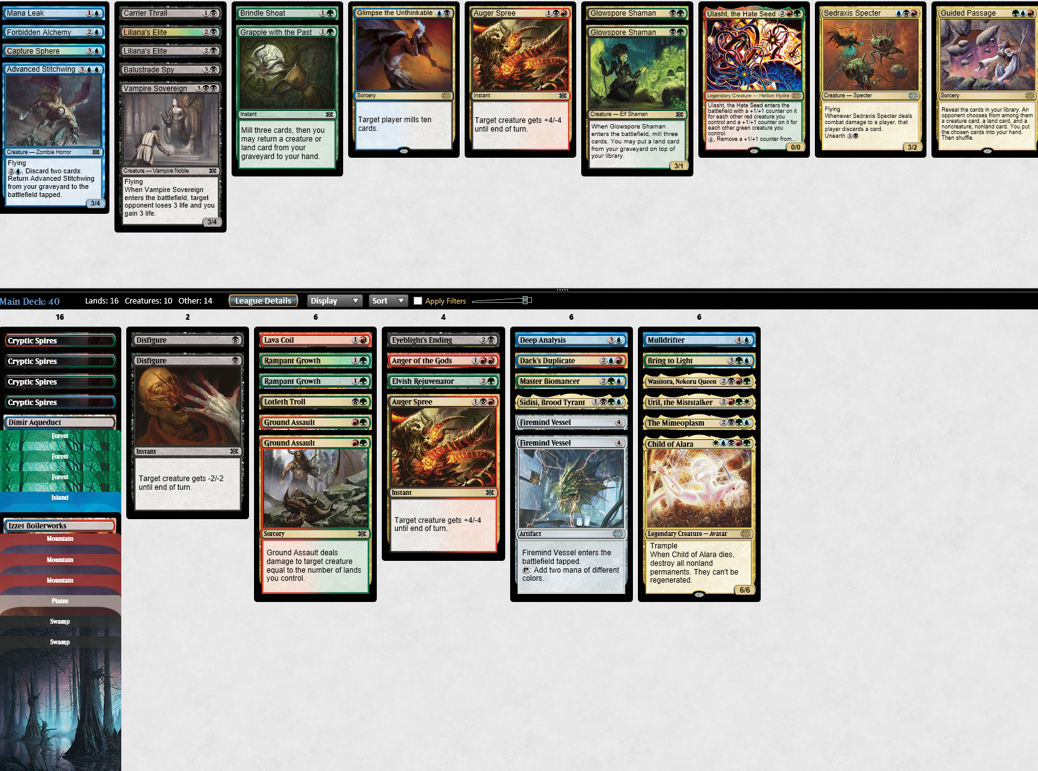
Occasionally, my decks will turn into almost full-blow Ramp decks. There’s a lot of top end to sink mana in in this format as a payoff for ramp, and the sky’s the limit. I’ve even played and had some success with Planar Bridge, potentially the clunkiest card you could imagine.
Planar Bridge Deck
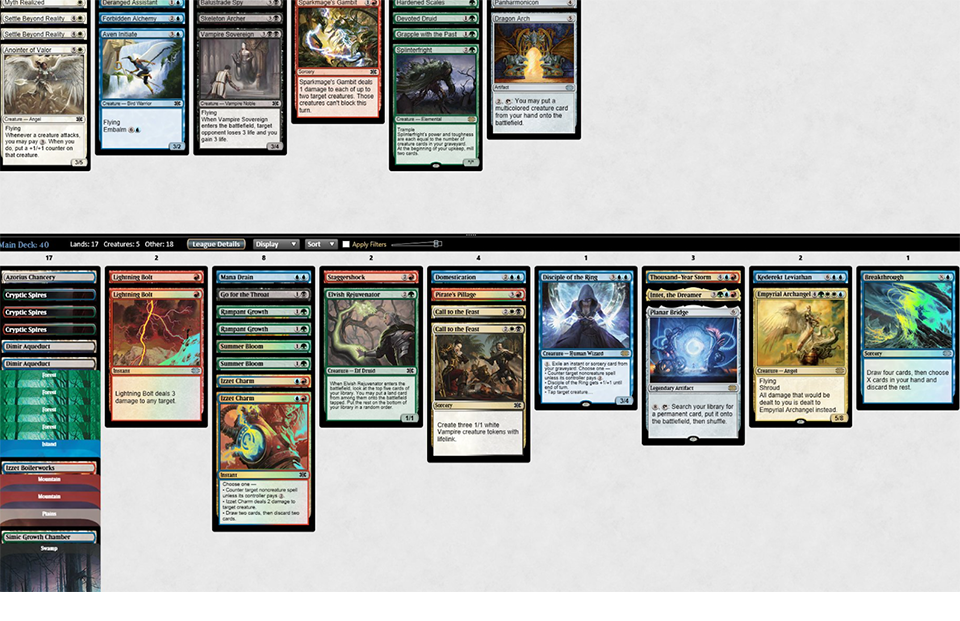
This deck is about as clunky as it gets, but it played out fairly well.
Trophy Ramp Deck

I like aggro decks in this format, but they do come with a serious problem. A lot of the key commons are incredibly narrow. This makes it hard to pivot considering that multicolor-good-stuff decks bounce around colors a bit more, lean on their high-powered rares and uncommons, and don’t end up throwing away picks to figure out which aggro deck is open.



This steers me to picking up Cryptic Spires and removal spells over the more narrow-efficient creatures for the aggro decks. I’ve forced aggro by relying on a couple of wheels early and using early picks on such as Monastery Swiftspear, Cartel Aristocrat, Fireblade Artist, and God’s Willing, only to find the weaker cards I was trying to wheel in my archetype were missing and were not getting enough of what I needed, and I was forced to play some of the weaker cards in the format to fit the theme, which is not a place I wanted to be. Hero of the Games is not playable outside some extreme circumstances.
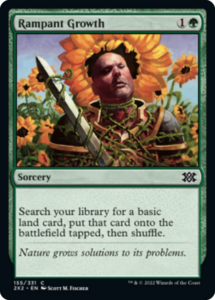
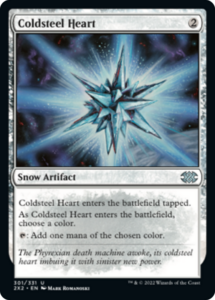
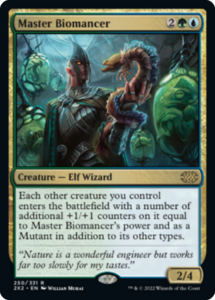
I try to branch into green in my midrange decks because Rampant Growth is one of the best and most important commons to keep pace. Picking up two or three of those and/or Coldsteel Hearts can keep your mana tight while also allowing you to pick up all the bombs other drafters aren’t able to cast. Some of the late pick-ups in this format are absurd. I’ve gotten some of the better cards in the format as late as pick-eight, cards like Master Biomancer, because others are trying to keep their decks focused and I’m aggressively picking up fixing early unless the power level is high.
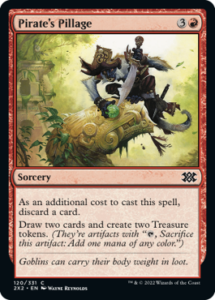
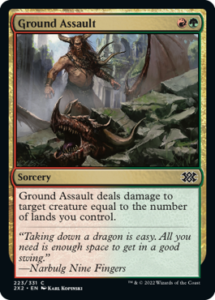
Pirate’s Pillage is another card I get late and really like that’s in the midrange or ramp decks. It helps for fixing, and your decks can end up with too many mana sources, so filtering them away is solid. Ground Assault also seems to be easy removal to pick up because R/G isn’t a well-supported archetype, so if I’m already Rampant Growthing into Pirate’s Pillage, I’ll also pick up a couple of late Ground Assaults. If you’re able to read the table and notice them wheeling early, you can also try and wheel various gold cards in later packs in the same way. Since there’s often a friction between getting enough fixing and picking up enough quality cards, it’s important to note which gold cards are wheeling, so try and use that to your advantage later.
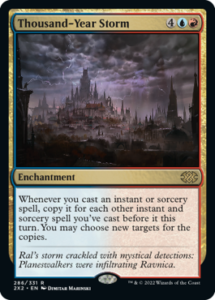


A card I’ve been impressed with is Thousand-Year Storm. I thought I was memeing at first playing with it, but you’re able to load your deck up with instants and sorceries. It’s enough to win if you pick up a few Pirate’s Pillage and Deep Analysis. You can win with just Deep Analysis decking the opponent if necessary, but a Lightning Bolt, Rift Bolt, or Lighting Helix can also do the trick. Pirate’s Pillage Chains are simply absurd.
I ended up cutting The Mimeoplasm and Psychic Symbiont from this deck for the Deep Analysis and Surreal Memoir after this picture. However, this deck was a solid example of a deck focused on Thousand-Year Storm.
My strategy for getting into aggro has been, if I fail to open powerful uncommons or rares in pack one that give me direction, but I’m able to pick something like a first pick Monastery Swiftspear or Rift Bolt with a something like a Lightning Helix or Lightning Bolt, then I force my way into a fast linear deck. I like red-based aggro decks best. R/W Prowess has been my favorite because it’s able to quickly goldfish with its best draws and takes advantage of cards that you get up to the last pick, such as Titan’s Strength and Martial Glory. R/B Aggro is also solid but harder to get into than R/W.
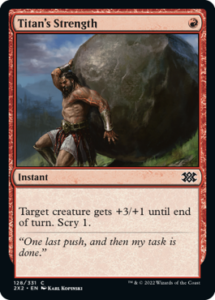
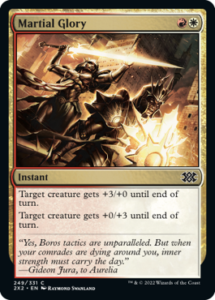
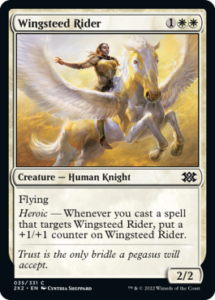
The deck also allows you to play few lands, which is important for the aggro decks in this format. Flooding out with an aggro deck will bury you, as your opponent’s decks won’t give you much opportunity to scrape your way back in when card-for-card your power level is too weak and there’s so much removal that running out of threats happens frequently. There are very few ways to sink unused mana in these decks, so you end up falling behind if your initial burst doesn’t pan out. Occasionally you can burn out your opponent off the top of the deck. However, if you don’t get their life total in that range early, it’s going to be hard to win top-decking Wingsteed Riders and Titan’s Strength against an opponent with a fully developed board and tons of engines to draw cards.
As the format’s been developing, I’ve found people are taking bounce lands and rares earlier, which are the staples of these five-color-good-stuff decks, so I’ve mostly been trying to land in three colors and only branch out when I have the fixing. I’ll go out of my way for bombs, but it’s important to stay disciplined when the bounce lands and Cryptic Spires are drying up quicker than they were initially. Cryptic Spires don’t solve all the problems, so it’s important to find fixing in other places, even if you have to play an inefficient card like Traveler’s Amulet occasionally. This can be a nice play early with a bounce land on the draw so you don’t have to discard.


In general, I haven’t had much success with aggro. Looking through my various trophy photos, I haven’t found a single trophy deck with aggro. I find even my best aggro decks just tend to draw the wrong pieces at the wrong times or run into an Anger of the Gods, Supreme Verdict, or Damnation. The mana also isn’t great, which can be a problem. When your deck wants to play a one-drop into a two-drop and the only fixing is on lands that come into play tapped, it can be tough. These aggro decks would love to play a City of Brass or, in some cases, Cavern of Souls if you pick them up.
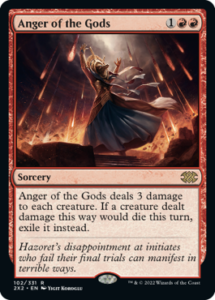

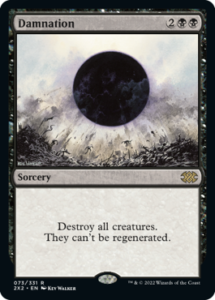
Overall, I like the format. It’s in the bottom tier of the Masters formats, but I still like it. The format’s cross-synergies are fun. It’s a bunch of different versions of going tall or going wide with creatures against decks with tons of removal. I recommend Phantom Drafts on MTGO if you’re drafting online, as the value isn’t there for a set this expensive on MTGO. I still don’t understand why more expensive pack drafts have higher rake at four tickets per draft. I initially started in the non-phantom queues but realized it’s really hard to beat that rake when the cards are worthless, and also it was taking so much longer to fire a draft that I just moved to the faster phantom queues.
I’ll continue to play more Double Masters 2022, but also, there’s another new draft format I’ll be back to write about next week—Baldur’s Gate on Arena. I’ve already done a couple and have tons of opinions to share on the format. See you then!
Image Copyright: (c) 1995-2020 Wizards of the Coast LLC, All Rights Reserved







1 thought on “Double Masters 2022 Draft”